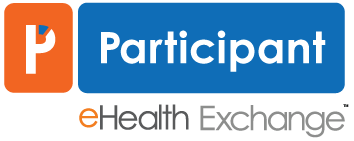Have you heard of interoperability in health care? If not, you’ve somehow escaped the relentless parade of vendors, regulators, trade associations, and computer scientists droning on and on over the last two and a half decades. Want an example? How about this little ditty from the non-profit Healthcare Information and Management Systems Society (HIMSS)†:
“It is the ability of different information systems, devices and applications (systems) to access, exchange, integrate and cooperatively use data in a coordinated manner, within and across organizational, regional and national boundaries, to provide timely and seamless portability of information and optimize the health of individuals and populations globally.”
If you’re like me, you understand all of these words as English, and even recognize a few of the concepts in that statement. But, man, I’m really not sure what those concepts would look like in the real world. Fear not: I’m going to try to offer something a little closer to home to chew on so we can discuss the most recent rules and regulations flowing from (the Centers for Medicare and Medicaid Services (CMS), HHS, and others.
Let’s try putting interoperability into the context of patient care. A middle-aged man shows up at a gastroenterology appointment and meets the doctor for the first time. “So, what brings you in today?” the doctor inquires. The patient replies, “I’m not sure. My primary doc saw something during my physical.” Now here’s where interoperability comes in. The doctor says “Please give me a second,” and turns to her computer in the exam room. With a few clicks, she can see that the primary care physician was concerned about a potential hiatal hernia and sent the gentleman to a general surgeon for a consult. The surgeon wanted a fuller picture of the man’s condition and sent him to the digestive clinic for a full evaluation, prior to making any judgement on his suitability for a surgical solution to the potential problem.
Interoperability allows the gastroenterologist to pull up the information in her medical records system and see the patient’s prior visits, physician’s notes, and lab work in her exam room , without having to call three or four different physician offices, request records, and wait (potentially for days) to get the necessary information she needs to form a diagnosis. The doctor can gain the insight she needs immediately and deliver to the other providers her contribution to the appropriate care of that patient. All done in almost real time and without the “overhead” of coordination of care – in a nutshell, interoperability saves a bunch of labor.
So our gastroenterologist just “interoperated.” A verb, an action, and a result that provides faster, more effective treatment.
“This sounds wonderful!” you say. “Why aren’t we doing this right now?!?”
Long and short, it’s complicated. There are endless barriers of data, data formats, networks, protocols, semantics, and, yes, politics and fear. There are a thousand details but none of that is truly important. What you need to know is that the health care IT (HIT) community has been working for decades to overcome all of these barriers, and we have made significant progress. So are we close to the scenario described earlier?
I believe that if you were to ask most HIT professionals or regulators, or even vendors, all would say we are close. But some rather daunting barriers still exist. Most widely noted is something called Information Blocking. In simple language, information blocking is a practice that is likely to interfere with access, exchange, or use of electronic health information (EHI). Sadly, many providers, vendors, networks, and even health information exchanges (HIE) have such practices in place.
The good news is that government regulators understand that we must stop information blocking if we are to interoperate (notice the verb) as described above.. And they have published a final rule (official regulation within our governmental system) that says, in essence, “Thou shalt NOT block information.” Of course, as with all regulations, there are hundreds of pages of documentation clarifying what is and is not information blocking because it will eventually lead to financial penalties.
The main takeaway for patients is this: If your providers and their vendors are doing it right, doctors and pharmacists will be poised to access your complete medical history much more quickly, which could save your life.
And for the health care ecosystem, it’s time to find a resource to help you make sure you do not run afoul of these new government regulations.
“Information blocking” is a product of fear – of losing a patient or of violating patient privacy.
That last part is key to this balancing act. Federal regulators want to abide by privacy concerns while also maximizing the benefit of having the entire health care ecosystem engaged in a holistic approach to sharing and accessing relevant medical data.
After all, when it comes to the efficient sharing of data, a patient doesn’t want an ER doc waiting for a fax to learn a key aspect of the patient’s history. A pharmacist will want to instantly see what other medications a patient is taking for unrelated conditions, in order to make sure the drugs are compatible. And a change in primary care physician shouldn’t involve a data transfer that requires an army of IT professionals.
The usability of electronic health records (EHR) remains a pressing issue facing the health care industry, and competition among different EHR vendors and health systems often results in each refusing to share information, creating artificial barriers that limit access, exchange, or use of electronic health information. EHR vendors have been reported to engage in information blocking practices, including artificially high prices and restrictive contract language. Providers, EHR vendors, and HIEs are covered in the ONC 21st Century Cures Act. HIEs interact with health care providers with the goal of establishing connectivity, sharing and exchanging information for the overall benefit of the health care landscape.
One Florida firm specializing in navigating these difficult regulatory waters is Centralis Health.
Right now, Centralis is the only vendor AND participant (handling both technology AND legal regulatory paperwork) on the national eHealth Exchange. The exchange typically connects hospitals, medical groups, pharmacies, and other sites of care within federal regulations. Centralis Health’s recent addition was landmark and shows it is a trusted entity in this space.
Because of Centralis’ status, all of its Health Information Exchange (HIE) participants save money and are able to utilize a better way to share patient medical information among providers.


